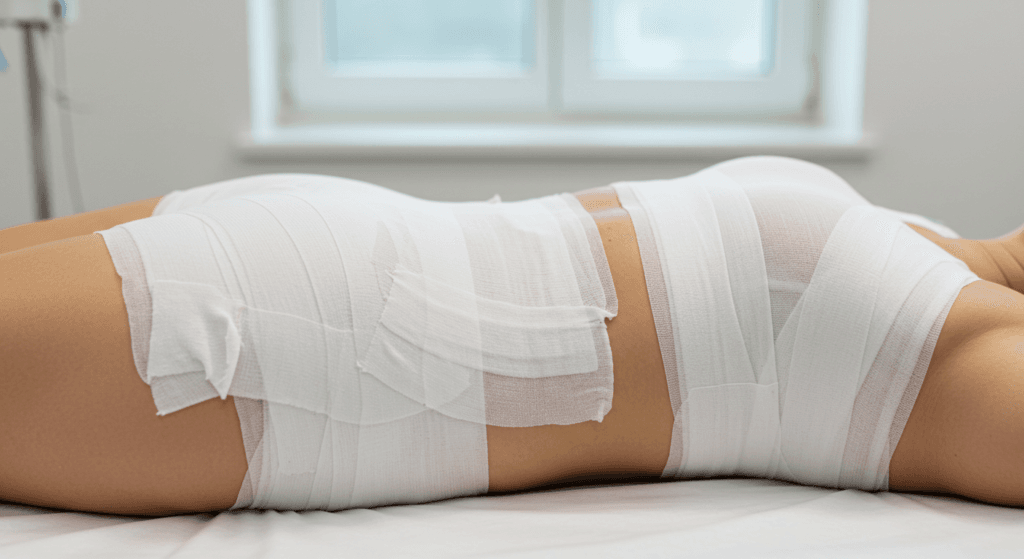A body lift is a significant surgical procedure designed to remove excess skin and fat from the abdomen, flanks, back, and thighs, resulting in a more toned and contoured physique. While the results are transformative, recovery requires careful attention to detail and adherence to your surgeon’s instructions. This comprehensive guide will walk you through the crucial aspects of body lift recovery, helping you navigate the healing process smoothly and safely.

Table of Contents
Immediate Post-Surgery Care
The first few days after your body lift are critical for your healing. You’ll likely be in a surgical facility for at least one night, where the medical team will monitor your vital signs and manage any immediate complications. Expect to have drains in place to remove excess fluid; these will be removed by your surgeon at a follow-up appointment. You’ll also have bandages and dressings covering your incisions. Keep these clean and dry, following your surgeon’s specific instructions regarding dressing changes.
Pain is expected immediately following surgery. Your medical team will provide pain medication to manage this discomfort. It’s crucial to take your medication as prescribed, even if you feel the pain is manageable. Under-medicating can hinder your recovery and increase your risk of complications. Additionally, you’ll need assistance with daily tasks such as bathing, dressing, and moving around. Arrange for a friend or family member to provide support during this initial period.
Deep vein thrombosis (DVT) is a potential risk after major surgery. To mitigate this, your surgeon will likely recommend regular leg exercises and the use of compression stockings. These help improve circulation and prevent blood clots. Furthermore, you should avoid prolonged periods of sitting or standing still. Get up and move around as much as tolerated, even if it’s just short walks around your home. Listen to your body and rest when needed, but gentle movement is key.
Finally, maintain good hydration by drinking plenty of fluids. This aids in the healing process and helps prevent constipation, a common side effect of pain medication. Follow your surgeon’s dietary recommendations, starting with a clear liquid diet and gradually progressing to solid foods as tolerated. Avoid strenuous activities and heavy lifting during this initial phase of recovery.

Pain Management & Medication
Pain management is a crucial aspect of body lift recovery. Your surgeon will prescribe pain medication, typically a combination of opioids and non-steroidal anti-inflammatory drugs (NSAIDs). Follow the prescribed dosage and schedule meticulously. Do not exceed the recommended dose, even if you experience significant pain. Overdosing on pain medication can be dangerous.
It’s important to communicate openly with your surgeon or healthcare provider about your pain levels. If your prescribed medication isn’t adequately managing your pain, they can adjust the dosage or prescribe alternative options. Don’t suffer in silence; effective pain management is essential for a successful recovery. Consider exploring complementary pain relief methods such as ice packs (applied for short periods) and gentle massage (once cleared by your surgeon).
As your recovery progresses, your pain should gradually subside. Your surgeon will likely recommend tapering off the opioid medication to minimize the risk of dependence and side effects. Always follow their instructions carefully during this weaning-off process. Remember that pain levels vary from person to person, and your experience may differ from others.
Finally, be aware of potential side effects of pain medication, such as nausea, constipation, and drowsiness. Discuss any concerning side effects with your healthcare provider. They can offer strategies to mitigate these side effects or prescribe alternative medications if necessary.
Managing Swelling & Bruising
Swelling (edema) and bruising (hematoma) are common after a body lift. These are a natural part of the healing process, resulting from tissue trauma and fluid accumulation. The swelling and bruising will typically peak within the first few days and gradually decrease over several weeks. Elevation of the affected areas can help reduce swelling. Try to keep your legs elevated whenever possible, especially during the initial recovery period.
Compression garments play a vital role in managing swelling and supporting the healing tissues. Your surgeon will provide you with specific instructions on wearing these garments. It’s crucial to wear them as directed, even if they feel uncomfortable at times. They help to minimize swelling, reduce discomfort, and promote proper healing. Avoid tight clothing or anything that might restrict blood flow to the affected areas.
Ice packs can also help to reduce swelling and pain. Apply ice packs wrapped in a thin towel to the affected areas for short periods (15-20 minutes at a time) several times a day. Avoid applying ice directly to the skin, as this can cause damage. Remember that swelling and bruising are normal, but if you experience excessive or worsening swelling, or signs of infection (increased pain, redness, pus), contact your surgeon immediately.
Finally, be patient. The reduction of swelling and bruising takes time. While you may see significant improvement within the first few weeks, it can take several months for the swelling to completely resolve. Follow your surgeon’s instructions diligently and maintain a healthy lifestyle to support the healing process.

Returning to Normal Activities
Returning to your normal activities after a body lift is a gradual process. Avoid strenuous activities, heavy lifting, and intense exercise for at least six to eight weeks, or as advised by your surgeon. This allows your incisions to heal properly and minimizes the risk of complications. Start with gentle walks and gradually increase your activity level as tolerated.
Driving is typically restricted for several weeks, depending on the extent of your surgery and your individual recovery progress. Avoid driving until you are comfortable with pain management, have sufficient mobility, and can react quickly and safely in unexpected situations. Your surgeon will provide guidance on when it’s safe to resume driving.
Returning to work depends on the nature of your job. If your job involves strenuous physical activity, you’ll likely need a longer recovery period. Discuss your return-to-work plan with your surgeon and employer. They can help determine a suitable timeline that balances your recovery needs with your work responsibilities.
Finally, remember that recovery is a personal journey. Listen to your body and don’t push yourself too hard. Rest when you need to, and celebrate your progress along the way. Maintain open communication with your surgeon throughout your recovery, and don’t hesitate to contact them with any questions or concerns.
Body lift recovery requires patience, diligence, and adherence to your surgeon’s instructions. By following this comprehensive guide and maintaining open communication with your medical team, you can maximize your chances of a successful recovery and enjoy the long-term benefits of your procedure. Remember that every individual heals differently, so be patient with yourself and celebrate each milestone along the way.
Transform Your Confidence with Surgyteam!
Join the thousands of satisfied patients who have experienced the exceptional care and expertise of Surgyteam’s renowned plastic surgeons. Whether you’re seeking aesthetic enhancements or reconstructive surgery, our dedicated team in Antalya is here to provide you with the highest quality treatment and personalized care.



